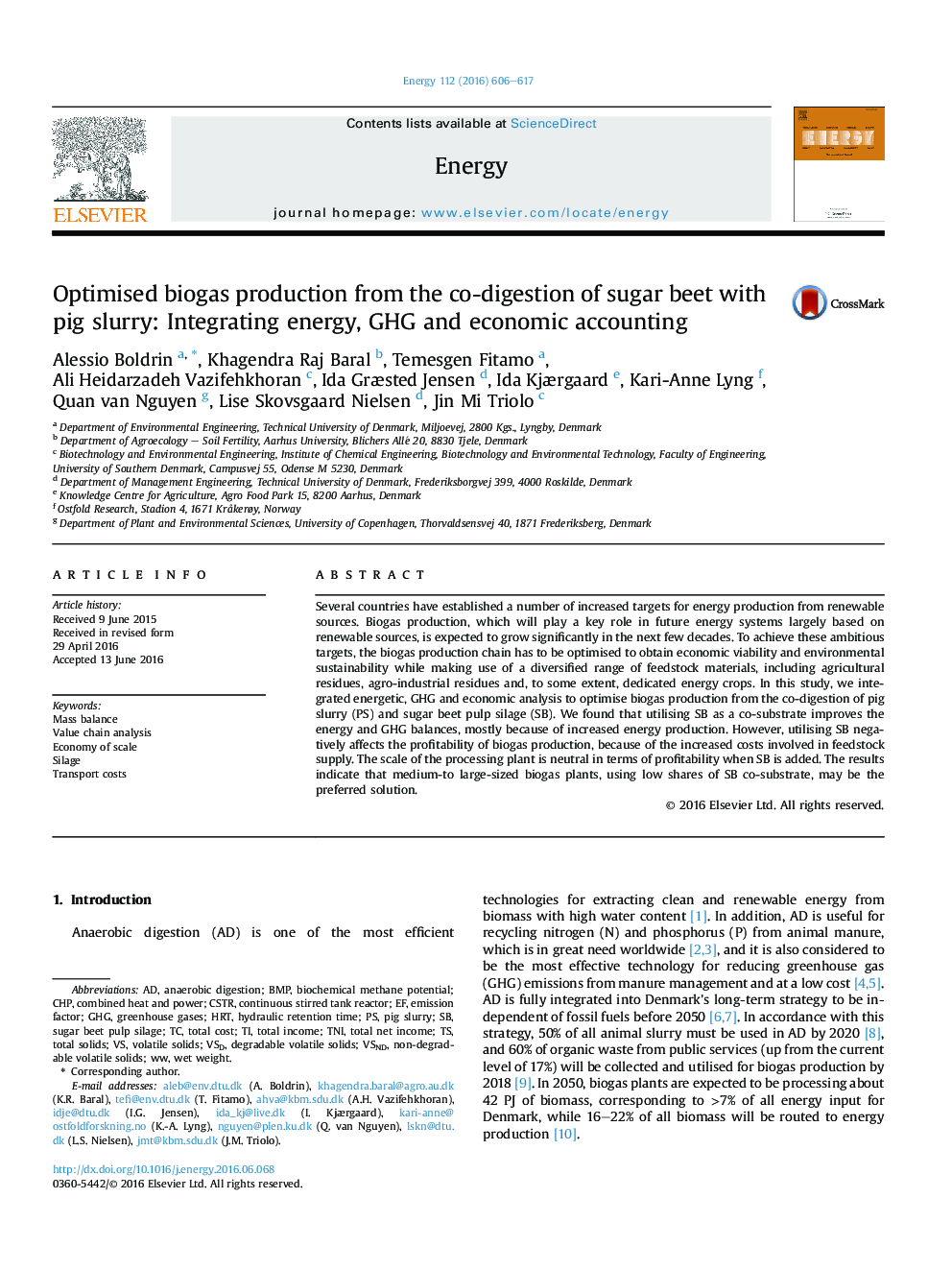| Article ID | Journal | Published Year | Pages | File Type |
|---|---|---|---|---|
| 8073044 | Energy | 2016 | 12 Pages |
Abstract
Several countries have established a number of increased targets for energy production from renewable sources. Biogas production, which will play a key role in future energy systems largely based on renewable sources, is expected to grow significantly in the next few decades. To achieve these ambitious targets, the biogas production chain has to be optimised to obtain economic viability and environmental sustainability while making use of a diversified range of feedstock materials, including agricultural residues, agro-industrial residues and, to some extent, dedicated energy crops. In this study, we integrated energetic, GHG and economic analysis to optimise biogas production from the co-digestion of pig slurry (PS) and sugar beet pulp silage (SB). We found that utilising SB as a co-substrate improves the energy and GHG balances, mostly because of increased energy production. However, utilising SB negatively affects the profitability of biogas production, because of the increased costs involved in feedstock supply. The scale of the processing plant is neutral in terms of profitability when SB is added. The results indicate that medium-to large-sized biogas plants, using low shares of SB co-substrate, may be the preferred solution.
Keywords
CHPGHGCSTRHRTVSDTnIEconomy of scaleValue chain analysisCombined Heat and PowerTotal solidsvolatile solidsPig slurrycontinuous stirred tank reactorhydraulic retention timeSilageEmission factorBMPMass balanceTransport costsTotal costAnaerobic digestionwet weightbiochemical methane potentialGreenhouse gases
Related Topics
Physical Sciences and Engineering
Energy
Energy (General)
Authors
Alessio Boldrin, Khagendra Raj Baral, Temesgen Fitamo, Ali Heidarzadeh Vazifehkhoran, Ida Græsted Jensen, Ida Kjærgaard, Kari-Anne Lyng, Quan van Nguyen, Lise Skovsgaard Nielsen, Jin Mi Triolo,
